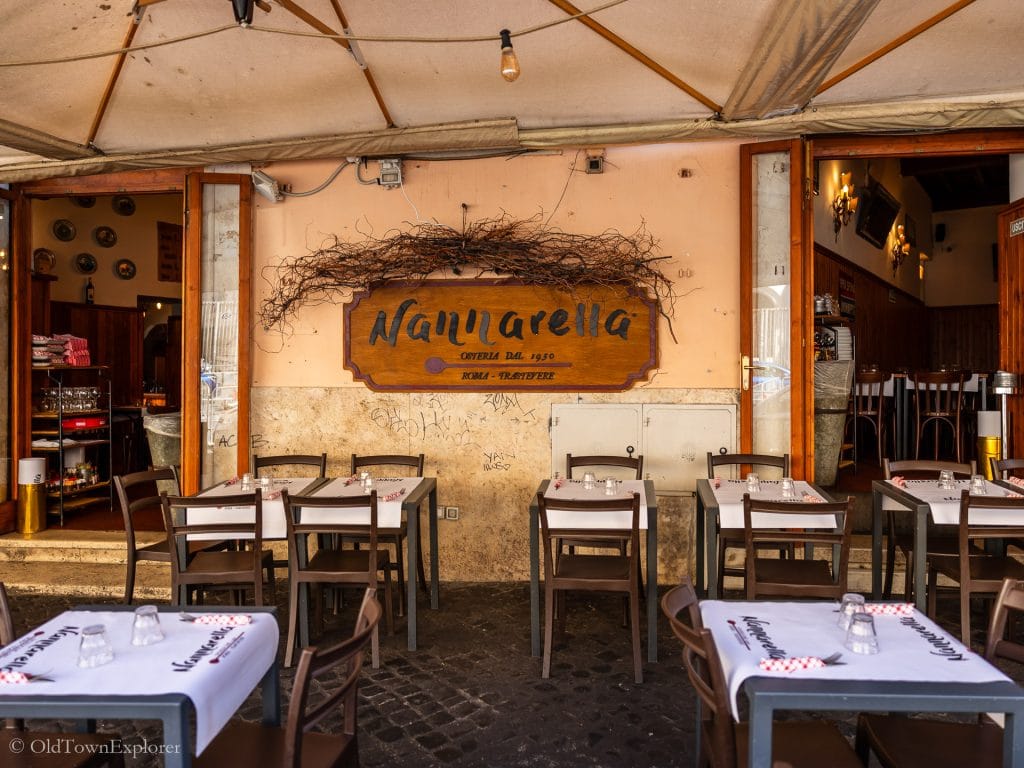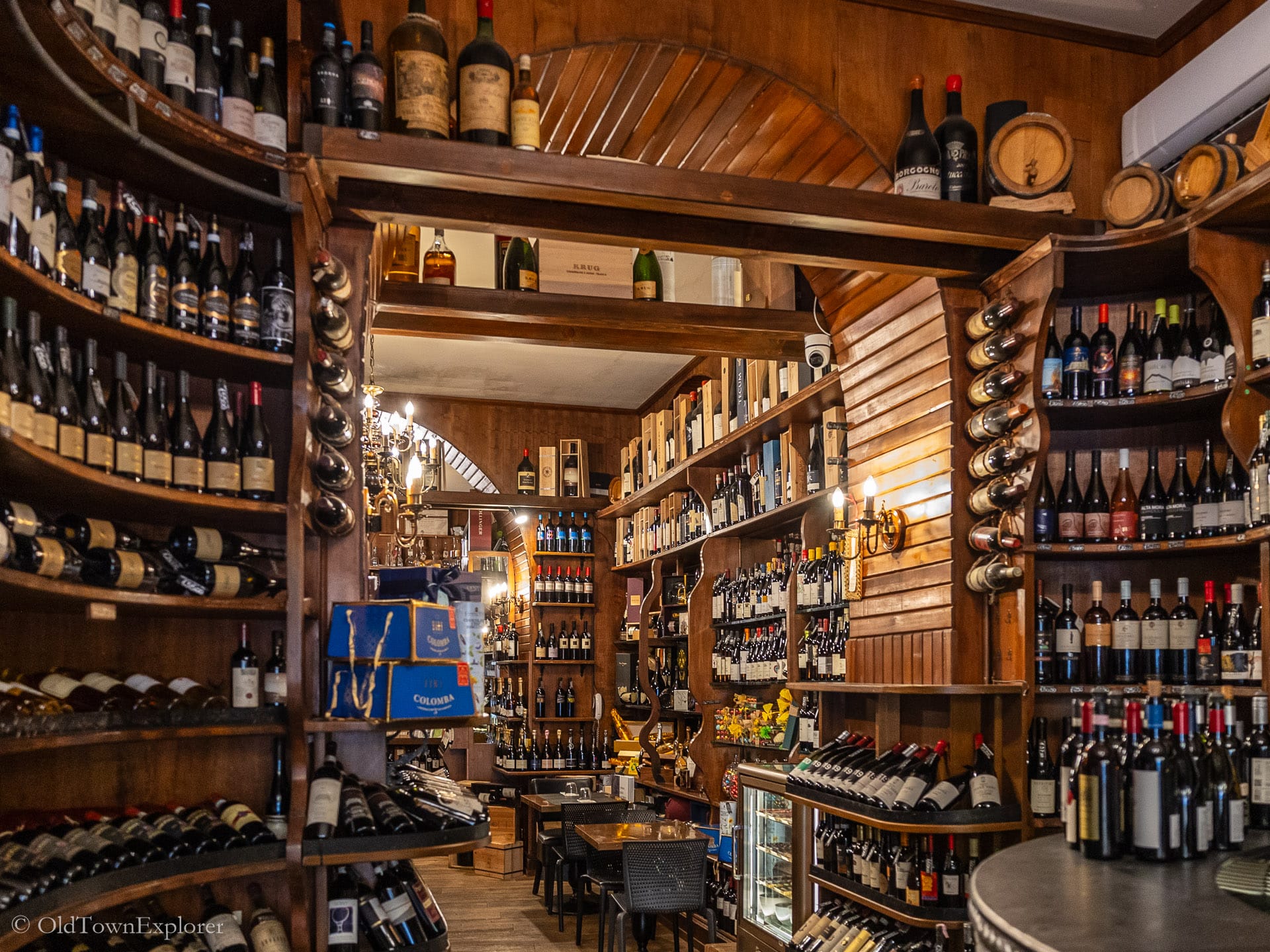Rome
Food | Wine | ArchitectureExplore Rome: Food, Wine & Architecture
We spent all of March and April in Rome—one of the world’s most iconic cities, where ancient history, striking architecture, and unforgettable food come together in a glorious swirl of cobblestone streets and espresso bars.
Whether you’re gazing up at the Pantheon’s dome, tossing a coin into the Trevi Fountain, or sitting down to a plate of cacio e pepe with a glass of local red, Rome offers travelers an unmatched blend of culture and cuisine.
In this guide, we’ve compiled what we learned during our stay—from what to eat and drink, to what to see, and when to go. We hope it helps you plan a memorable visit—and maybe even inspires a return trip (or three).
This website contains affiliate links that may earn us a small commission at no additional cost to you.
Rome Food
Rome’s food scene is rooted in tradition and driven by simplicity—using a few high-quality ingredients to create deeply satisfying dishes.
Start with the classics:
- Cacio e pepe: pasta, pecorino, and pepper—nothing more, nothing less.
- Carbonara: made with eggs, pecorino, guanciale, and no cream (ever).
- Amatriciana and Gricia round out Rome’s legendary pasta quartet.
Beyond pasta, don’t miss fried artichokes in the Jewish Quarter, fresh pizza al taglio on the go, and sweet treats like maritozzi (cream-filled buns) and gelato from artisan shops.
Markets like Campo de’ Fiori and Testaccio are perfect for sampling seasonal produce and street food.

Rome Wine
Rome may not sit in a major wine-producing region, but it’s a fantastic place to drink Italian wine—from Lazio’s crisp Frascati to bold Tuscan reds and volcanic whites from Campania.
Wine bars (enotecas) abound in Rome’s historic center and trendy neighborhoods like Trastevere and Monti. Many offer curated tastings or pairings with regional cheeses and charcuterie.
We spent several evenings hopping between wine bars, talking with knowledgeable staff, and sampling local wines.

Rome Architecture
Rome is an open-air museum with more than two millennia of architectural wonder. You’ll see layers of history stacked on top of each other—from ancient ruins to Renaissance palaces to Baroque masterpieces.
Ancient Rome: The Colosseum, Roman Forum, and Pantheon (still the world’s largest unreinforced concrete dome).
Baroque beauty: The Trevi Fountain, Piazza Navona, and churches by Bernini and Borromini.
Vatican highlights: St. Peter’s Basilica and the Vatican Museums are must-sees, even for the non-religious.

Where Is Rome Located?
Rome is located in central Italy, in the Lazio region, roughly halfway between Florence and Naples. It’s well-connected by air, train, and bus to other major Italian and European cities.
What Is The Best Time To Visit Rome?
The best month to visit Rome depends on what you’re looking for. Do you want the best weather, fewer crowds, or the best value? Following are our suggestions for each.
Weather
The best weather is a personal preference. We find the best weather for exploring a city is around 55° F and sunny. The weather in Rome during the summer can be very hot, so plan accordingly if you’re visiting in July or August.
Below is a chart showing the average high and low temperatures for each month so you can decide what is best for you.

Shoulder Season
The time of year with good weather and fewer crowds is often called the shoulder season. The shoulder season in Rome is mid-March through early May and mid-October through November. For many, this is the best time of the year to visit. We spent all of March and April in Rome. The weather was cool and comfortable. The city was crowded with tourists, but not as much as it is during the summer months.
Best Value
March and November are good months to visit Rome for the best value and with fewer crowds. The weather during these months is cool in Rome and similar to our preferred temperature for walking most of the day.
Best Places to Stay In Rome
Hotels in Rome
There are many great places to stay in Rome. For the best experience, we recommend staying near the Historic Center (the castle marker on the map below). The area around the Historic Center is the most pedestrian-friendly, filled with historical landmarks, many of the main streets and squares are close to vehicles, making it more pedestrian-friendly than other areas.
Here’s a map with hotel and apartment options that can be filtered to meet your needs. Select your travel dates to get specific availability and prices.
Book your stay now!
Other Things to Know About Rome
Airport
Leonardo da Vinci–Fiumicino Airport (code: FCO) – there are numerous direct flights from the United States to FCO.
Train Station
Roma Termini, Via Giovanni Giolitti, 40, is the main train station in Rome.
Time Zone
CEST (Central European Summer Time) UTC/GMT +2 hours
Currency
Euro €
Language
Italian – Rome is a city where English is abundantly spoken.
Visa
Citizens from the United States, United Kingdom, Canada, and Australia don’t need a visa to visit Italy if they stay 90 days or less. For more information on visa-free travel in Italy, check out our article on traveling visa-free.
Electricity
Italy’s electrical outlets are Type C, F, and L. They have a 230V supply voltage and 50Hz. Travelers from the United States will need an adapter.
If you have many items to plug in, we recommend a travel power strip with multiple USBs and standard plug-ins. Using a power strip, you will only need one adapter to plug the strip into the wall.
SIM Card
Travelers will want a SIM card for Italy. You can get either a local SIM card or an eSIM card.
To get a local SIM card, you have to find a local cellular service provider, often stand in line for assistance, show your passport, and complete some paperwork. The SIM cards work great, but purchasing them is somewhat inconvenient. This option is best if you need more than 5GB of data.
We use eSIMs exclusively because they can be purchased through an app prior to arrival in a new country and activated when you hit a cell tower in the country. We use Airalo eSIMs. They work great, and I recommend them if you plan to use less than 5 GB of data during your stay or if you need internet immediately on arrival.
Car Rental
The fantastic train system in Italy makes rental cars unnecessary for most destinations. However, rental cars are needed to reach smaller towns and explore the countryside. In addition to the major car rental companies found in the United States, Sixt and Europcar are common throughout Europe. For a comparison of rental car offers from large, international brands and smaller regional brands, we recommend Discover Cars.
FAQs About Rome
What is Rome best known for?
Rome is best known for its rich history, stunning architecture, and delicious cuisine. The city is home to iconic landmarks such as the Colosseum, Vatican City, and the Trevi Fountain. Visitors also come to Rome to experience the vibrant street life, charming piazzas, and world-class museums.
What is the best month to travel to Rome?
The best month to travel to Rome is typically in April, May, or September. During these months, the weather is generally pleasant with mild temperatures, making it ideal for exploring the city and visiting its many attractions without the intense heat of summer or the crowds of peak tourist season. Additionally, you may be able to find better deals on accommodations and experience shorter lines at popular tourist sites compared to the summer months.
Which area to stay in Rome for the first time?
When visiting Rome for the first time, it’s recommended to stay in the historic center, near popular attractions such as the Colosseum, Roman Forum, and Pantheon. This area is known for its charming cobblestone streets, lively atmosphere, and proximity to many iconic landmarks. Staying in the historic center will allow you to easily explore Rome’s rich history and culture on foot, with plenty of cafes, restaurants, and shops to enjoy along the way. Additionally, this area is well-connected by public transportation, making it convenient to venture out and discover other parts of the city during your stay.
Is Rome very expensive?
Rome can be considered moderately expensive compared to other European cities. The cost of living in Rome, including accommodation, food, transportation, and entertainment, can vary depending on your preferences and lifestyle. It’s advisable to plan a budget and make reservations in advance to manage your expenses effectively during your stay in Rome.
How many days do you really need in Rome?
The number of days you need in Rome really depends on your travel preferences and the sights you want to see. However, to truly immerse yourself in the beauty and history of Rome, it is recommended to spend at least 3-4 days in the city. This will give you enough time to visit iconic landmarks such as the Colosseum, Roman Forum, Vatican City, and Trevi Fountain, as well as explore the charming neighborhoods, indulge in delicious Italian cuisine, and soak in the vibrant atmosphere of this ancient city. Ultimately, the more time you can spend in Rome, the better you can experience all that it has to offer.
Rome Blog Posts
29 Pros and Cons of Living in Rome, Italy
Discover the pros and cons of living in Rome, Italy. Learn about life in the Eternal City and what to expect as a resident.

